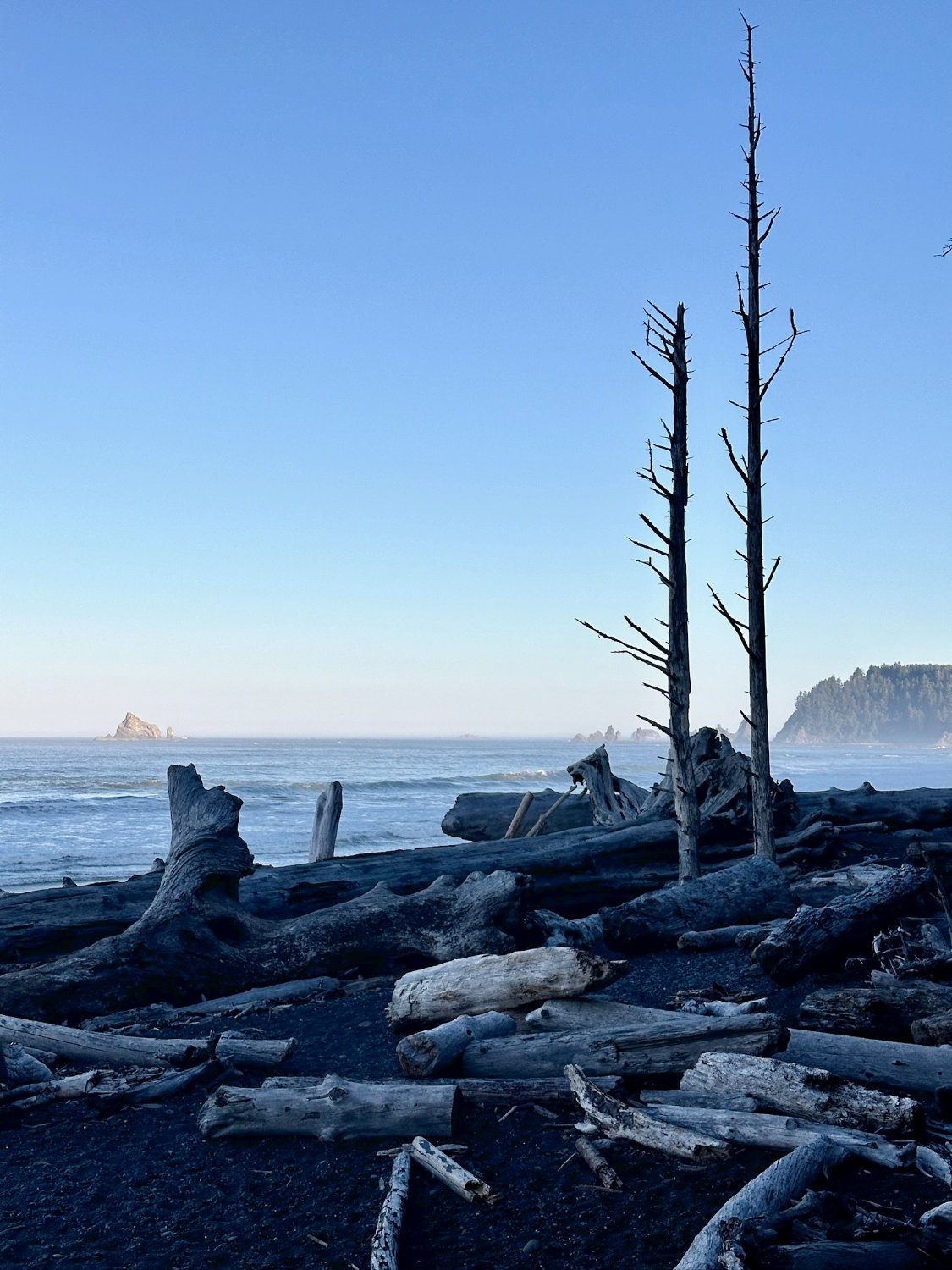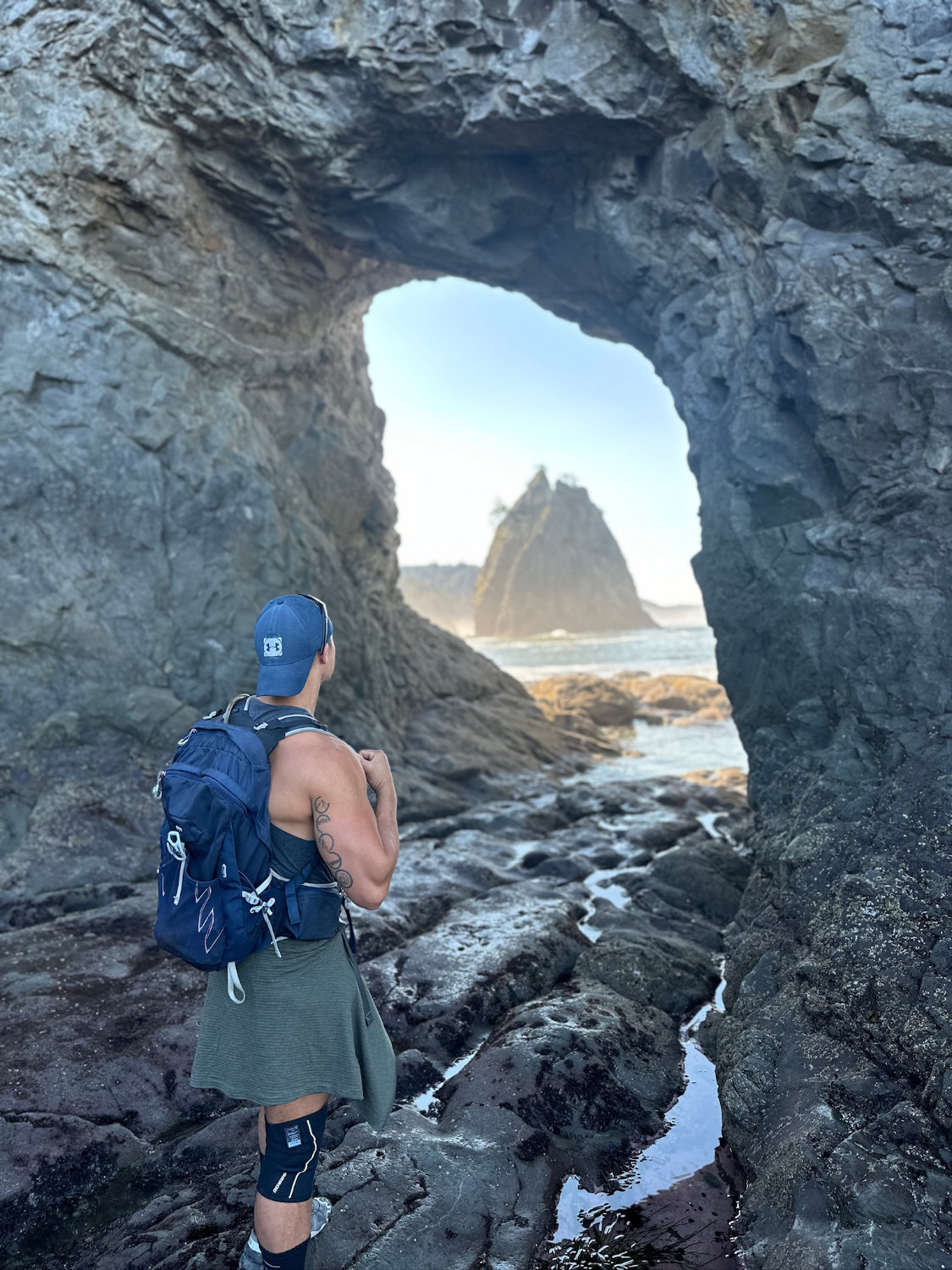Rialto Beach in Olympic National Park: Explore Tide Pools, Driftwood & Stunning Sea Stacks
Region: North America
Country: United States
When thinking of Olympic National Park, visitors often imagine the moss-covered trees of the Hoh Rainforest or the rugged peaks of the Olympic Mountains. Yet, hidden on the park’s western edge lies one of the most awe-inspiring coastlines in the Pacific Northwest—Rialto Beach. This wild, untamed stretch of sand, framed by towering sea stacks and scattered with colossal driftwood, offers a powerful reminder of the beauty and unpredictability of nature. Rialto Beach isn’t just another stop on a road trip through Olympic National Park—it’s an experience that stays with you long after you leave.
Situated just a short drive from the small town of Forks, Rialto Beach is a striking contrast to the lush, green forests that dominate much of the park. Here, the roar of the Pacific Ocean, the salty sea breeze, and the sight of powerful waves crashing against the shore create a sensory overload that captivates every visitor. Whether you’re a photographer seeking the perfect shot, a hiker looking to explore the wild coastline, or simply someone eager to experience the raw beauty of the Pacific Northwest, Rialto Beach has something to offer everyone.
A Rugged Coastline Like No Other
The first thing you’ll notice when you step onto Rialto Beach is the sheer amount of driftwood strewn across the shore. These are no ordinary logs—they are massive, gnarled pieces of timber that have been weathered and polished by the relentless Pacific waves. Some of the logs are so large that they resemble natural sculptures, creating an otherworldly landscape that feels as if it belongs in a prehistoric era. Walking among these driftwood giants is both exhilarating and humbling, as you realize the immense power of the ocean that carried them here.
What makes this driftwood particularly fascinating is its history. Some of the logs found on Rialto Beach are thought to be hundreds of years old, having originated from forests as far away as Alaska or British Columbia. These trees were likely uprooted by storms, washed into rivers, and carried down to the Pacific where the ocean currents transported them to beaches like Rialto. Over time, the saltwater and constant battering from the waves have stripped the bark and smoothed the wood, turning them into the massive bleached logs you see today.


The beach itself is a mix of smooth pebbles and black sand, adding to its dramatic appearance. Towering sea stacks—those iconic rocky formations rising out of the ocean—dot the shoreline, giving Rialto Beach its distinct character. These sea stacks, formed by millennia of erosion, are home to a variety of seabirds that nest in the crevices and soar above the crashing waves. As you walk along the beach, the sight of these majestic formations against the backdrop of the endless Pacific is nothing short of breathtaking.
For those who enjoy beachcombing, Rialto Beach offers a treasure trove of natural finds. The relentless waves wash up all sorts of interesting objects, from smooth stones and shells to fragments of sea glass. Each tide brings with it new surprises, making every visit to Rialto Beach a unique experience.


Hole-in-the-Wall: A Natural Wonder
No visit to Rialto Beach is complete without making the trek to the famous Hole-in-the-Wall, a stunning rock formation located about 1.5 miles up the coast. This natural archway, carved by the pounding waves, is a popular destination for hikers and photographers alike. The best time to visit Hole-in-the-Wall is during low tide, when the receding water reveals tide pools teeming with marine life.
The hike to Hole-in-the-Wall is relatively easy, though the uneven surface of the pebbles can make it a bit challenging in spots. As you walk along the beach, you’ll be treated to stunning views of the Pacific Ocean, with sea stacks rising out of the water like ancient sentinels. The constant roar of the waves, the salty tang of the sea air, and the feel of the wind on your face combine to create an immersive sensory experience that’s hard to describe.
When you arrive at Hole-in-the-Wall, the sight of the natural archway, framed by the vast expanse of the Pacific, is nothing short of awe-inspiring. At low tide, you can walk through the arch and explore the tide pools on the other side. These pools are a window into the underwater world, filled with sea stars, crabs, and a variety of marine species. One of the most captivating creatures you’ll encounter here is the sea anemone.


The Enchanting World of Sea Anemones
Sea anemones are one of the hidden gems of the tide pools at Rialto Beach, especially near Hole-in-the-Wall. These fascinating, flower-like marine animals attach themselves to rocks and seem to sway with the water’s gentle currents. Their tentacles are often bright green, purple, or pink, adding a splash of color to the otherwise stark rocky environment. These tentacles contain stinging cells, which the anemones use to capture small prey like fish or shrimp. It’s fascinating to watch them in action as they slowly move their tentacles in search of food.
Sea anemones at Rialto Beach are perfectly adapted to the harsh conditions of the Pacific coast, where they must withstand both crashing waves and long periods of exposure during low tide. Despite their delicate appearance, they are incredibly resilient. As the tide recedes, you’ll often find anemones clustered in rocky crevices, their tentacles retracted to conserve moisture until the ocean returns. If you look closely, you might even spot tiny crabs or small fish hiding among the anemones, seeking refuge from predators in the safety of the tide pools.
The area around Hole-in-the-Wall is also a photographer’s dream. The way the light plays off the rocks, the sea stacks, and the archway itself creates endless opportunities for stunning shots, especially during sunrise or sunset when the colors of the sky reflect off the water. Whether you’re an experienced photographer or just someone with a smartphone, it’s impossible to take a bad picture at Rialto Beach.


Wildlife: A Coastal Haven for Birdwatchers and More
Rialto Beach isn’t just a feast for the eyes—it’s also a haven for wildlife enthusiasts. The beach is part of the Quillayute Needles National Wildlife Refuge, which protects several offshore islands that serve as nesting grounds for seabirds. If you’re a birdwatcher, be sure to bring your binoculars, as you’re likely to spot a variety of species, including gulls, cormorants, and even the occasional bald eagle soaring overhead.
In addition to seabirds, Rialto Beach is home to other forms of wildlife. Seals and sea otters are often seen lounging on the rocks just offshore, and if you’re lucky, you might catch a glimpse of a gray whale during the spring and fall migration seasons. The combination of wildlife, rugged coastline, and dramatic sea stacks makes Rialto Beach one of the most photogenic and biodiverse locations in Olympic National Park.
The Power of the Pacific: A Lesson in Respect
One of the most important things to keep in mind when visiting Rialto Beach is the sheer power of the Pacific Ocean. The waves here are no joke, and the currents can be incredibly strong. It’s not uncommon to see massive swells crashing against the shore, sending spray high into the air. While the sight is mesmerizing, it’s also a reminder of the ocean’s unpredictability and the importance of respecting its power.
Before setting out for Hole-in-the-Wall, it’s crucial to check the tide schedule. The tides at Rialto Beach can come in quickly, and certain areas of the beach, including the path to Hole-in-the-Wall, can become inaccessible at high tide. Many hikers have found themselves trapped by the rising water, so be sure to plan your hike accordingly. A good rule of thumb is to start your hike about an hour or two before low tide to give yourself plenty of time to explore and return safely.
In addition to the tides, the weather at Rialto Beach can be unpredictable. Even on sunny days, the wind can pick up quickly, bringing with it mist and fog. Be sure to dress in layers, as the temperature can change rapidly, and bring a windbreaker or rain jacket to protect yourself from the elements.


Why Rialto Beach Should Be on Your Bucket List
There’s something undeniably magical about Rialto Beach. Perhaps it’s the way the sea stacks rise out of the ocean like ancient monoliths, or the sight of driftwood scattered along the shore like the remnants of a shipwreck. Maybe it’s the feeling of standing at the edge of the continent, with nothing but the vast expanse of the Pacific Ocean stretching out before you. Whatever it is, Rialto Beach has a way of captivating its visitors and leaving a lasting impression.
For many, a visit to Olympic National Park wouldn’t be complete without experiencing the wild beauty of its coastline. While the Hoh Rainforest and the park’s mountain peaks are certainly worth exploring, Rialto Beach offers something entirely different. It’s a place where you can feel the raw power of nature, where the landscape is constantly changing with the tides, and where every visit feels like a new adventure.
Whether you’re a seasoned traveler or someone who simply wants to experience the untamed beauty of the Pacific Northwest, Rialto Beach should be at the top of your list. Its unique combination of rugged coastline, dramatic sea stacks, and abundant wildlife make it a destination unlike any other. So the next time you’re planning a trip to Olympic National Park, don’t forget to include a visit to Rialto Beach. Trust me, you won’t regret it.
Rialto Beach is more than just a stop along the way—it’s a destination in its own right. With its rugged beauty, diverse wildlife


